Contents
Preface
These plans and instructions were authored by request from a young lady who was about to embark on her first ever woodworking project. The young ladies name is Rose and she wanted to make an outside table with a separate bench for her two small children. She explained to me what she wanted and set the boundaries regarding shape and style.
My task was to design a simple structure within those boundaries, draw plans, and write instructions as simple as possible befitting of a first time DIY woodworker.
Fast forward, and she dealt to the task with relative ease.
Introduction
Standard (inch) version
- This is an easy-to-build table with a separate seat suitable for small kids.
- The structure can be built with a minimum of tools.
- The table is 44″ long, 17-1/2″ wide, and 20-3/4″ high.
- The seat is 44″ long, 10″ wide, and 12-3/4″ high.
- This project is made using 3/4″ x 2-1/2″ stock. That means the wood is 3/4″ thick and 2-1/2″ wide.
- The only other size wood used is 1-1/2″ x 1-1/2″ stock. That means the wood is 1-1/2″ wide and 1-1/2″ thick.
Metric version
- This is an easy-to-build table with a separate seat suitable for small kids.
- The structure can be built with a minimum of tools.
- The table is 1100mm long, 490mm wide, and 520mm high.
- The seat is 1100mm long, 280mm wide, and 330mm high.
- This project is made using 70mm x 20mm stock. That means the wood is 70mm wide and 20mm thick.
- The only other size wood used is 42mm x 42mm stock. That means the wood is 42mm wide and 42mm thick.
- The latter is only used for the top rails, which are the cross-members that the table-top boards and the seat-top boards are screwed to.
- If you cannot source the exact stock sizes mentioned above (width and thickness), then go for something near.
- You may have to make an adjustment or two to the plans but it all should be easy enough to sort out.
Required tools
For this project you will only need a sharp handsaw, a screwdriver (electric or hand), a measuring tape, a pencil, a square, a few clamps – the more the merrier, and you will need a miter box in order to make straight cuts across the wood.
Before you start
- Have a skim through the notes and a run over the plans to familiarize yourself with the parts.
- Prepare a workbench. A flat stable surface at a height to suit.
- Have all the tools and materials handy.
The parts and cutting list
The pieces and the cutting list
Below are scaled drawings showing all the pieces.
That is followed by the cutting list.
Standard (inch) version
From 3/4″ x 2-1/2″ stock, cut…
- 11 pieces @ 44″ long.
- 2 pieces @ 35-1/2″ long.
- 6 pieces @ 20″ long.
- 3 pieces @ 17-1/2″ long.
- 4 pieces @ 12″ long.
- 3 pieces @ 10″ long
From 1-1/2″ x 1-1/2″ stock, cut…
- 2 pieces @ 17-1/2″ long.
- 2 pieces @ 10″ long.
Metric version
From 70mm x 20mm stock, cut…
- 11 pieces @ 1100mm long.
- 2 pieces @ 880mm long.
- 7 pieces @ 500mm long.
- 3 pieces @ 490mm long.
- 4 pieces @ 310mm long.
- 3 pieces @ 280mm long
From 42mm x 42mm stock, cut…
- 2 pieces @ 490mm long.
- 2 pieces @ 280mm long.
Step 1 & 2. Cut the pieces and drill the side boards
Step 1. Cut the pieces to length
- Cut all the pieces to length according to the cutting on the previous page.
- There is also a drawing of every piece.
- Always cut the longest pieces first to minimize wastage.
Step 2. Drill screw holes through the side boards
Standard (inch) version
- Drill screw holes through the side boards, two at the top and two at the bottom of each piece.
- Make the holes the same width as the screw.
- Make the top holes 3/4″ down from the top and 1/2″ in from each side.
- Make the bottom holes 1-1/4″ up from the bottom and 1/2″ in from each side.
Metric version
- Drill screw holes through the side boards, two at the top and two at the bottom of each piece.
- Make the holes the same width as the screw.
- Make the top holes 20mm down from the top and 12mm in from each side.
- Make the bottom holes 35mm up from the bottom and 12mm in from each side.
Step 3. Mark position for the first side board
Standard (inch) version
- Mark on the top rails and the footers, for the placement of the first side boards.
- On the table top rails and the footers, mark for each side of the center side board.
- On the seat top rails and footers, mark the very center.
- Refer to the diagram above for clarity.
Metric version
- Mark on the top rails and the footers, for the placement of the first side boards.
- On the table top rails and the footers, mark for each side of the center side board.
- On the seat top rails and footers, mark the very center.
- Refer to the diagram above for clarity.
Step 4. Fix the first side board
- Screw a side board WITH ONE SCREW ONLY TOP & BOTTOM to the table top rail and the footer.
Ensure the board is flush with the top of the top rail and flush with the bottom of the footer. - Screw a side board WITH ONE SCREW ONLY TOP & BOTTOM to the seat top rail and the footer.
Ensure the board is flush with the top of the top rail and flush with the bottom of the footer. - THE REASON to put only one screw in (top and bottom) at this stage, is so the assembly can be skewed, if need be to make it square.
- Now check with a set-square that the assemblies are square and that the top rails and footers are parallel.
Step 5 & 6. Add and fix the remaining side boards
Step 5. Add the other side boards
- Add the other side boards WITH ONE SCREW ONLY TOP AND BOTTOM.
Step 6. Fix the side boards
- Check everything once again for square and then add the second screw.
- That will lock everything in place.
Step 7. Prepare the table top and seat top
Standard (inch) version
Metric version
- Lay the table top boards next to one another, likewise the seat top boards, on a flat surface with the ends flush (even).
- Screw a batten across the table top boards, in the middle with ONLY ONE SCREW AT EACH MEETING. This is the underside of the table.
You do not need to pre-drill the batten for this part.
Do the same with the seat top boards. - Ensure the table top and seat top are square and then add a second screw at each meeting. Stagger the screws (the screws will not be in a straight line). Refer to the diagram for clarity. The second screw will lock everything in place (prevent the table top and seat top from skewing).
Next…
- Drill screw holes at each end of the table and seat top boards, two holes through each end of each board, in 2-3/4″ (70mm) from the ends.
- A good idea is to draw a line across the boards, in 2-3/4″(70mm) from the ends. Keep the screw holes to that line.
Step 8. Clamp the sides to the tops
Standard (inch) version
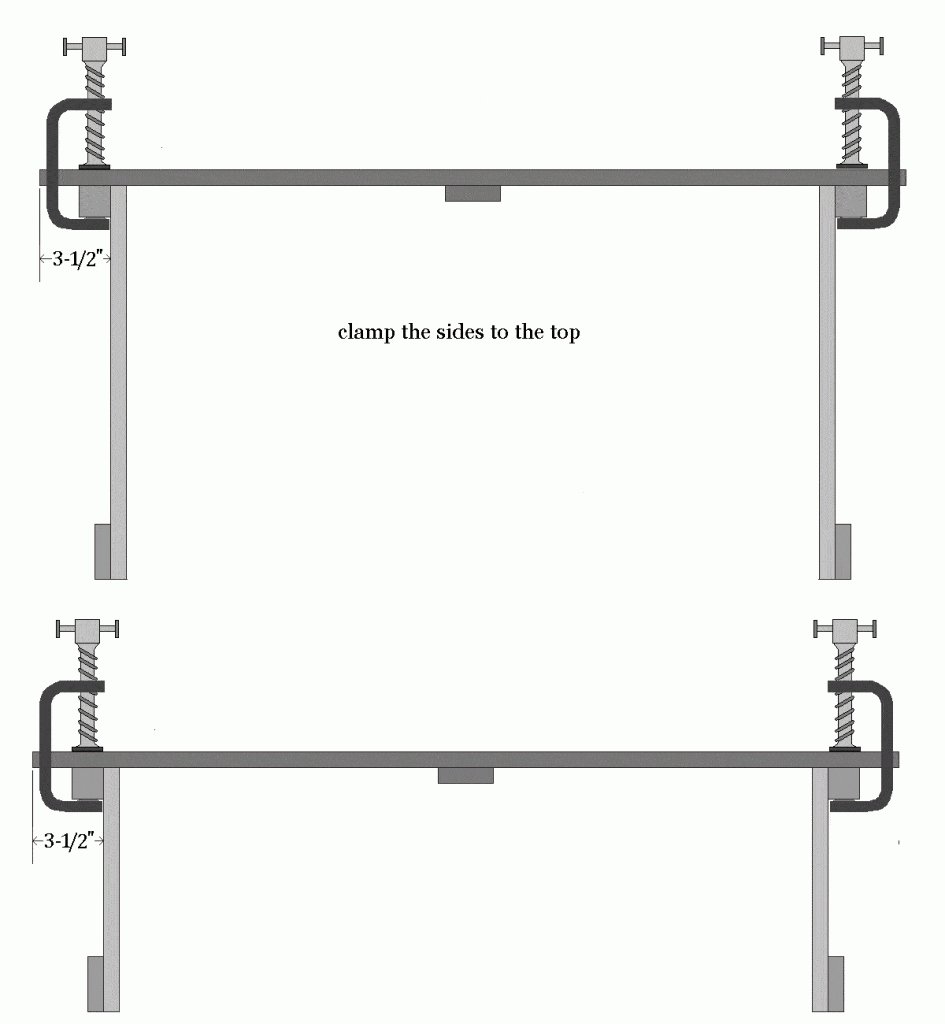
Metric version
- Clamp the sides to the tops, so that the side boards are in 3-1/2″ (90mm) from the ends.
The screw holes in the tops should be aligned along the center of the top rail. - Everything being in line and square, screw the tops to the top rails.
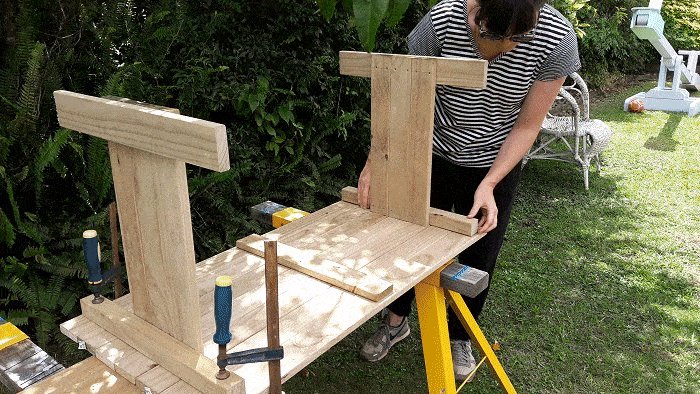
Step 9. Add the braces
- This is best done with the table and the bench upside-down.
- Just the bracing to go. Two lengths in all – one for the table and one for the seat.
- This is best done with the table and the bench upside-down.
- First drill a screw hole through the center of each side wall, just above the top rails (remember, everything is upside-down at this stage).
- Apply a bit of exterior type wood glue to the ends of the braces.
- Sit the braces in between the sides (one for the table and one for the bench) on top of the batten in the center of the table top and bench top respectively.
- Sit a temporary packer piece (the same thickness as the batten) at each end of each brace to keep the brace parallel with the table/bench tops.
- Screw the braces in place.
Hey, that’s about it
- Turn the two units up the right way and get the kids to test them out.

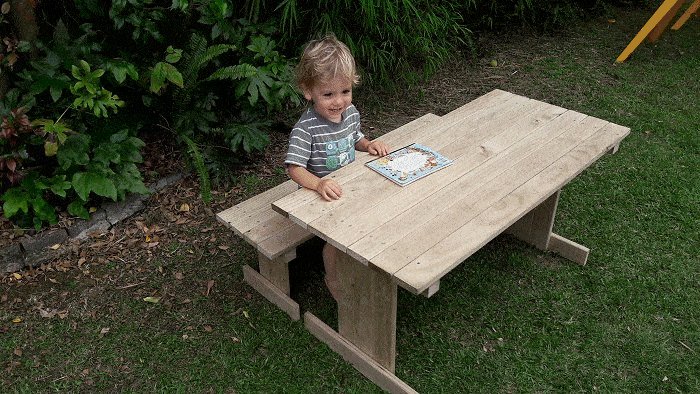

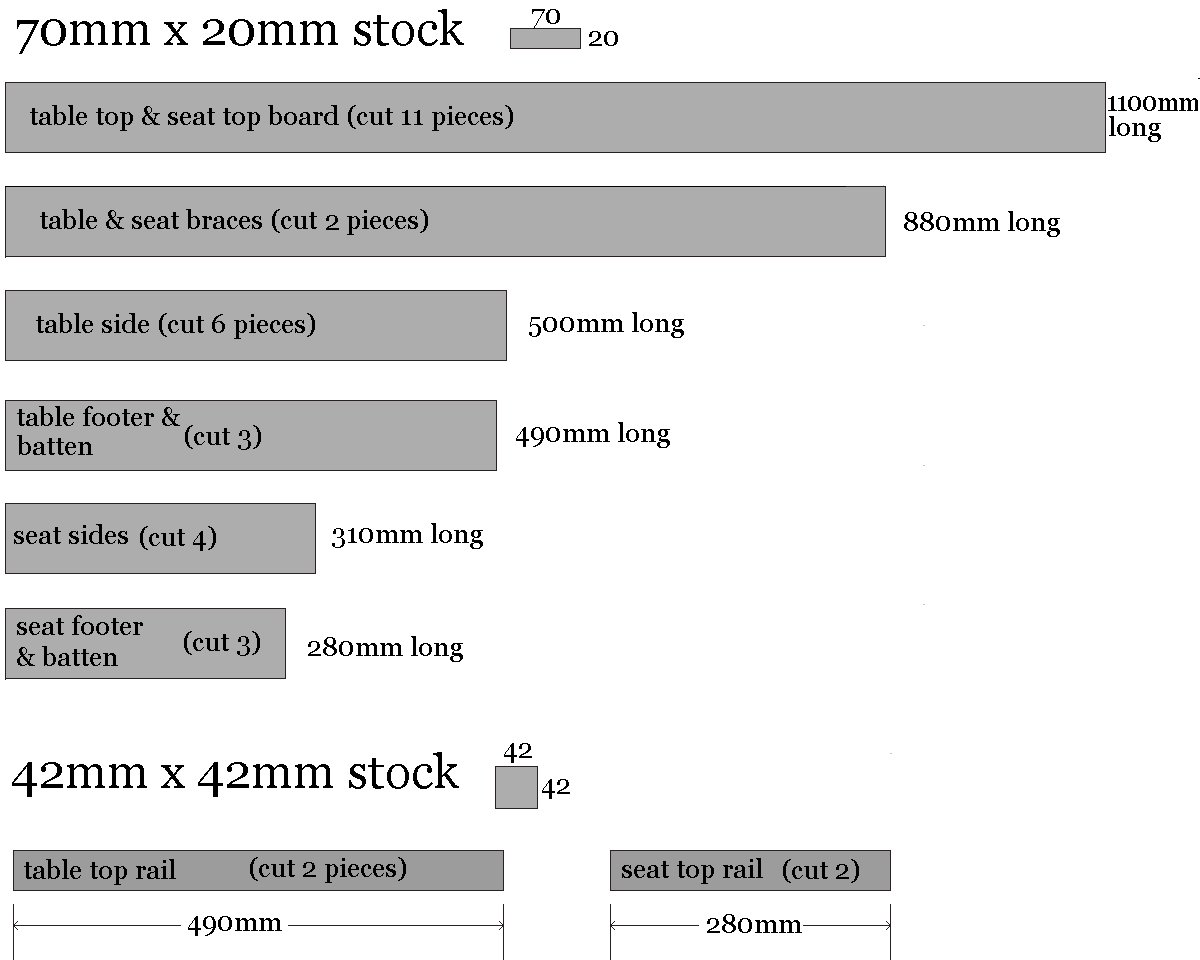

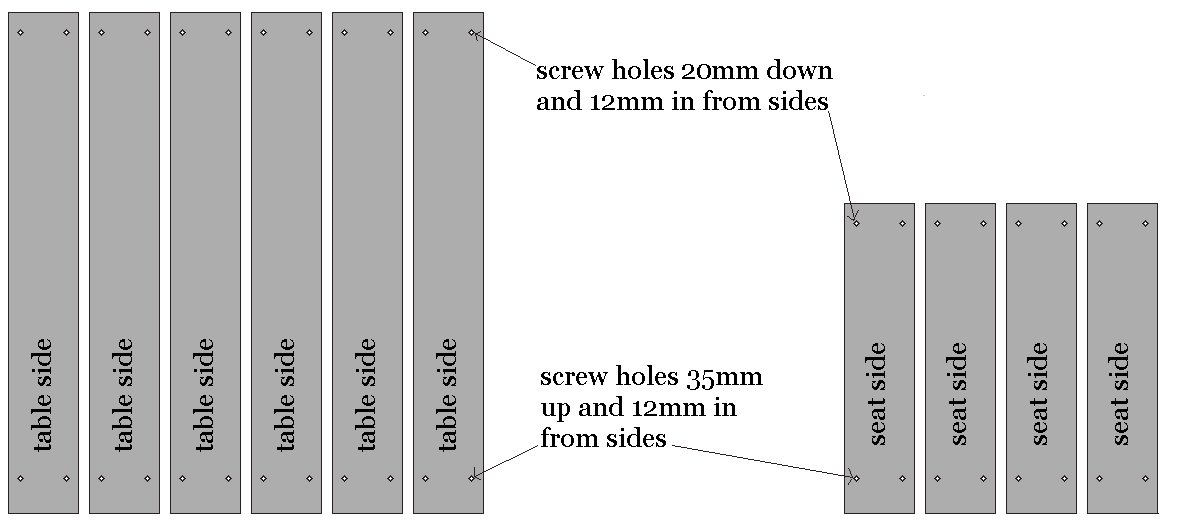





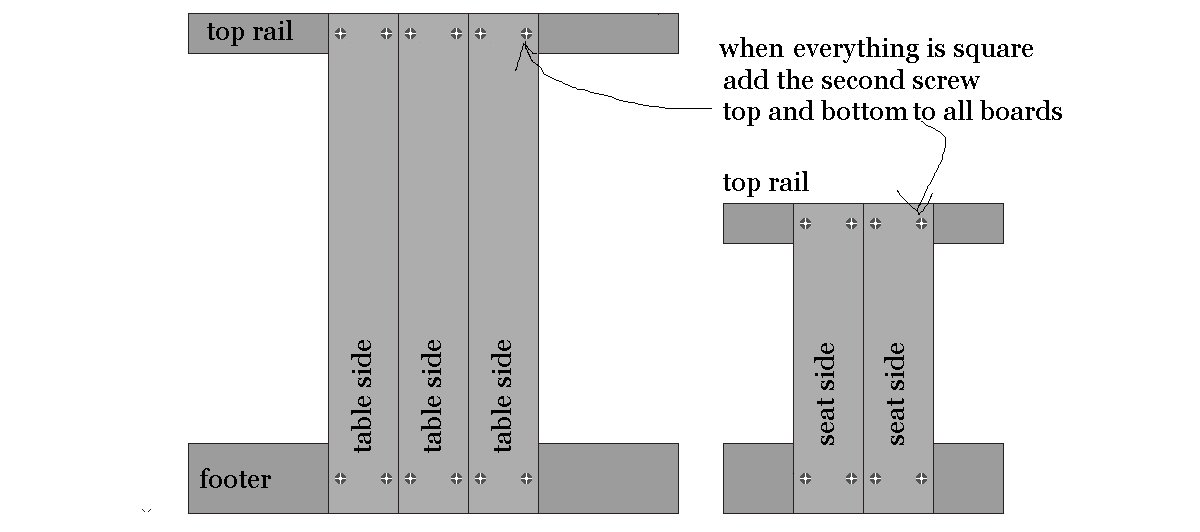
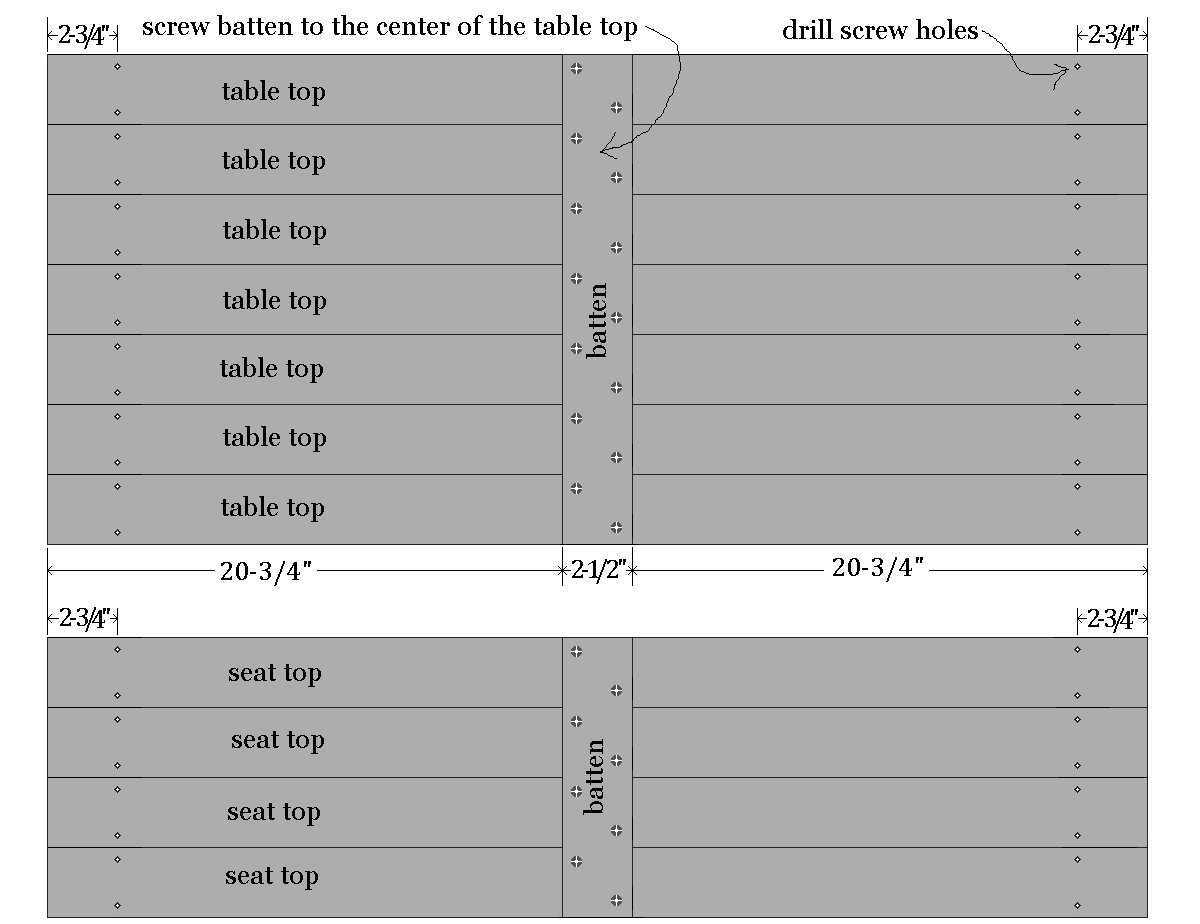
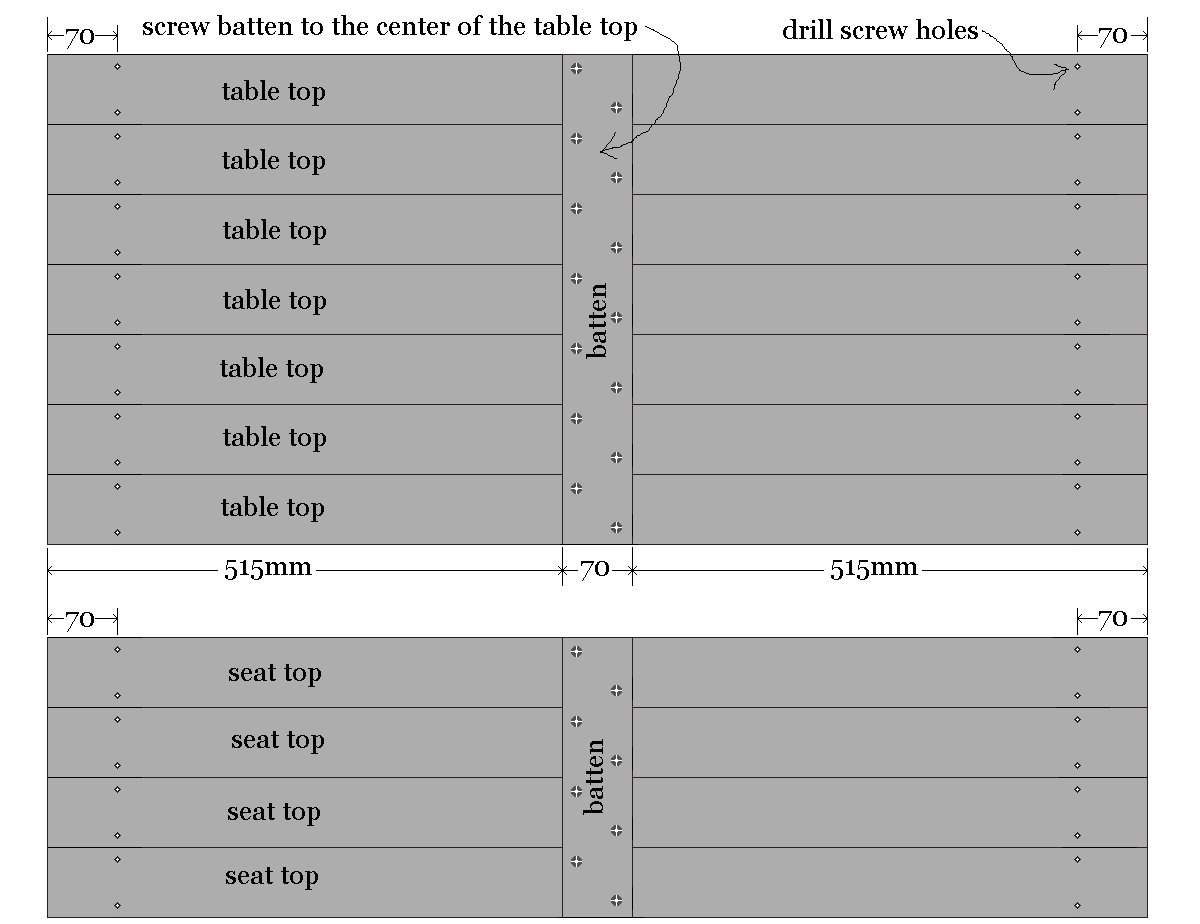

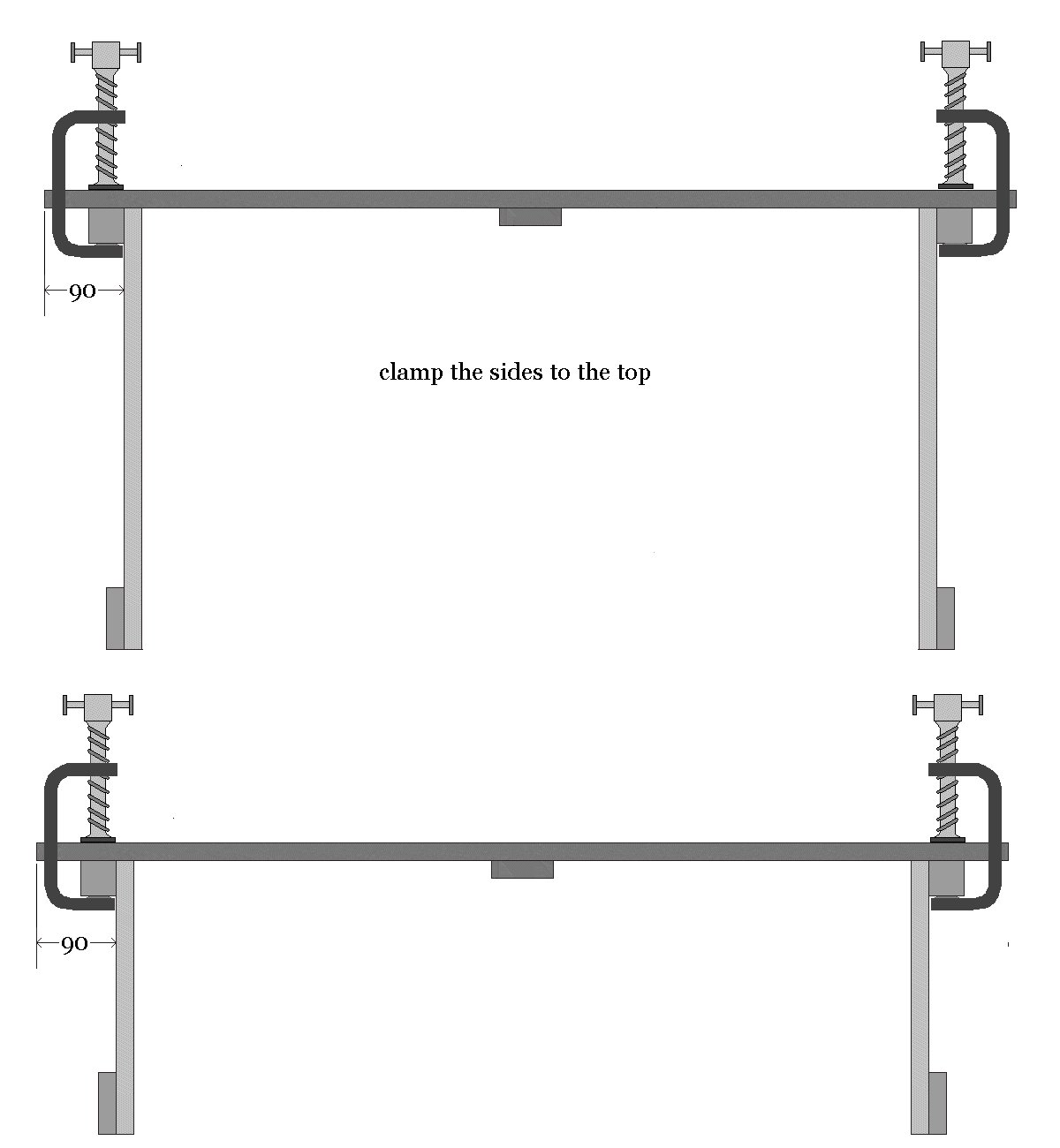
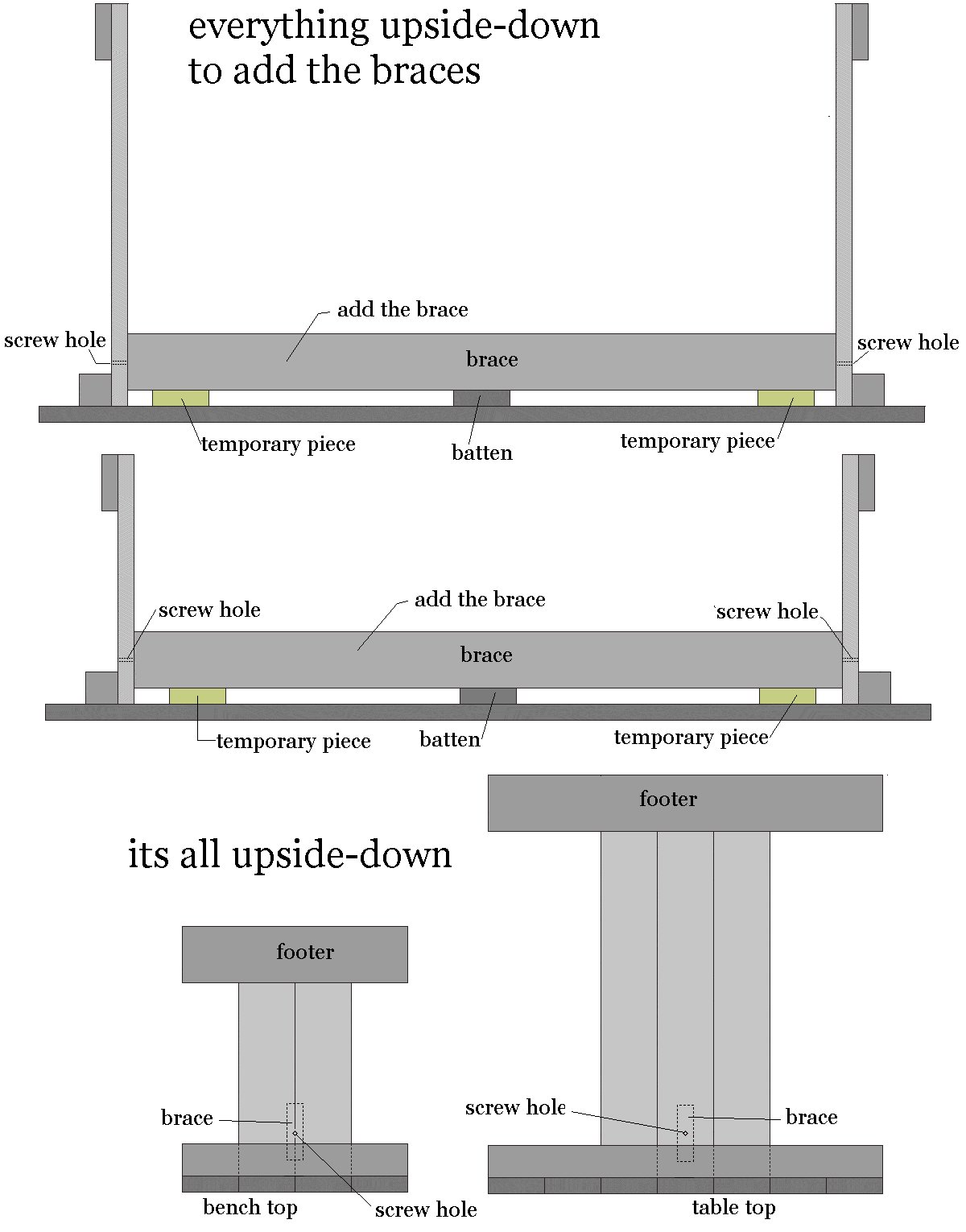



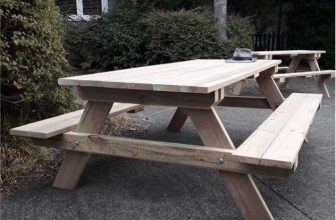
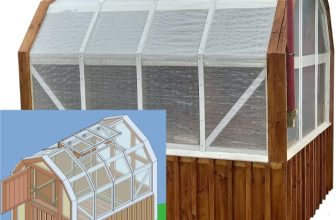
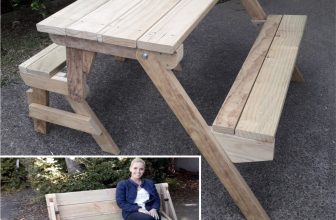
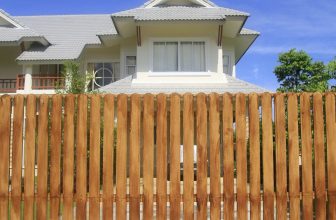
Loved it.
It was a really easy project, made extra easy by using a miter box.
I have used a hand saw quite a few times in my life and it has always been easy enough, but by using the miter box to cut the wood it made it super easy. You don’t have the tricky part of starting off the cut and you don’t need to worry about getting it straight, you just lightly glide the saw back and forth through the miter box and it cuts through easily.
The drill took a bit of getting used to.
If I wasn’t completely straight to the screw it would wobble and make a noise but if I was perfectly straight the screws went in smoothly.
I enjoyed drilling the holes the most, and seeing it all come together.
The plans were very easy to follow and I love the end result.
If I were to do it again I would make the bench seat and table a foot or two longer.
Preparation. Making a miter box
As this was Rose’s first woodworking job and she had never used a power saw before, we decided to use just a hand saw. Although she had used a handsaw before, she was not all that good at doing exact cuts so we thought it would be best for her to have a miter box – a simple tool to guide the saw, making cross cuts easy, straight, and accurate.
So…
So Rose made a miter box, which technically was really her first woodworking project – but that’s another story.
Step 1. Cutting the pieces to length
Rose measured and marked a piece of wood and placed it in the miter box for cutting. As she is a novice at this, she found that the box bounced around a bit with her sawing motion.
The fix?
Rose clamped the miter box to the work surface. This solved that problem and Rose was then able to cut all the pieces accurately and easily.
Step 2. Drilling screw holes
Screw holes had to be drilled at each end of all the side pieces according to positions given in the instructions.
Rose was also a novice with a power drill, and although she was a bit slow to start, she had it mastered by the finish.
Using it (the power drill) to make the miter box previously also gave her a bit of practice.
Step 3. Marking side board positions
Referring to the plans and instructions Rose marked for the middle side board on the table top rails and footers, and also the center of the bench top rails and footers.
There are three vertical boards each side of the table but only two vertical boards each side of the bench, so the table sides and bench sides have to be marked differently.
It did take a little bit of plan concentration.
Step 4. Fixing the first side board
With the plan drawings in front of her, Rose fixed the first board (with only one screw at each top and bottom) to the top rail and footer of each side.
The side middle board for the table side is fixed in the center of the top rail and footer, whereas there is no middle board in the bench sides so the bench side boards are fixed to the sides of the center mark.
Rose figured that out with a bit of a plan study.
Step 5. Adding the other side boards
She then added the rest of the vertical side boards but only fixed them with one screw top and bottom of each board.
The reason for only one screw top and bottom?
So the sides can be skewed if need be when checked to see if the vertical side boards are square with the top rails and footers.
In short, it allows movement until you are sure everything is square.
Step 6. Fixing the side boards
Using a set square, Rose checked to see that the vertical side boards were square with the top rails and footers.
Once confirmed (everything square), she put in the second screw top and bottom of every board.
That then locked the side boards in square position to the top rails and footers and stopped any possible skewing.
Step 7. Preparing the table & seat tops
Rose placed all the table top boards together on the work surface ensuring all the ends were flush.
She then screwed a cross member (batten) across the middle of the boards.
She then measured in from each end and drew a pencil line across the boards that would determines the line where the screw holes would be drilled. The measurements and in the instructions.
She then proceeded to drill the screw holes according to plan. Rose seemed to be getting more confident as the job progresses.
Step 8. Clamping the sides to the tops
Right, almost there. The table and bench tops are made, and the sides are made.
Rose then clamped the sides to the tops (everything in upside down mode at this stage) ensuring the screw holes in the tops aligned with the center of the top rails.
Then the table and bench were flipped upright and the tops screwed to the sides.
Step 9. Adding the braces
Finally, she added a brace to the table and a brace to the seat according to the instructions.
This called for a dab of glue as each brace is only held by one screw at each end, and we don’t want any twisting, do we?
Done!
Video: https://www.youtube.com/watch?v=l_gBMKUzhcs&feature=youtu.be
Love this site. Ive been trying to find free plans . Wasn’t sure what i wanted to make, is this a good size for a 6year old. And how much did the project cost (ball park). I want this to be my first project. Thanks for sharing.